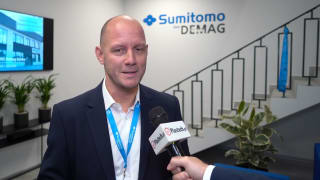 Lossburg. The demands on the injection side in the manufacture of miniature and micro parts have been clearly defined for some time. Previously the problem was simply how to achieve and implement these specifications technically. The new micro-injection module from Arburg now offers an efficient solution: it combines an 8 mm injection screw with a second screw for melting the material.
Lossburg. The demands on the injection side in the manufacture of miniature and micro parts have been clearly defined for some time. Previously the problem was simply how to achieve and implement these specifications technically. The new micro-injection module from Arburg now offers an efficient solution: it combines an 8 mm injection screw with a second screw for melting the material. As a reminder, what are the requirements stipulated by the processor that need be met for micro-injection moulding? Manufacturing products exactly in series with shot weights that are often just a few milligrams, corresponding to the weight of a single grain of granulate, is only possible if the dwell time of the melts in the injection unit as well as the level of material shearing can be kept correspondingly low. Moreover, the prepared melts must be perfectly homogeneous, both thermally and mechanically. It must be possible to regulate the cylinder temperature precisely and the plasticising process must be easily reproducible. However, it is also important that the entire range of "normal" plastics can be used and not just the specially prepared materials like micro-granulates.

At the premiere during the Technology Days, the new micro-injection module was presented on an electric Allrounder 270 A.Micro-injection module: requirements met
One problem with minute shot weights of less than one gram is, in some cases, the very long material dwell time in the infection unit. Furthermore, the displacement distance of the screw is extremely short because of the small injection volume. An effective solution is the new micro-injection module from Arburg. Unlike other alternatives on the market which use a combination of screw plasticising and piston injection, this operates using two screws which "share" the preparation, dosing and injection of the material.
Firstly, a servo-electrically driven screw pre-plasticising section, which is installed at 45 degrees to the horizontal injection unit, ensures standard granulates are prepared under ideal conditions. In terms of screw channel depths, the plasticising screw used is similar in design to a conventional three-zone screw. The molten material is then transported from the pre-plasticising stage to the injection unit. The injection screw is used purely for transport purposes. It has a diameter of only 8 millimetres, is fitted with a non-return valve and operates according to the screw/piston principle. This permits the smallest shot weights to be achieved with great precision and the required travel distance. At the same time, the perfect interplay of screw pre-plasticising and injection ensures excellent processing that is gentle on the plastic. The melt is continuously fed from the material inlet to the tip of the injection screw. This ensures that the First-In-First-Out principle is fully observed.
Constant injection conditions through dosage control
A prerequisite for continuously high part quality, is a homogenous melt feed. In order to achieve this, the pressure at the transfer point between the pre-plasticising screw and the injection screw is monitored and regulated. For this purpose, appropriate nominal pressure and maximum permissible screw circumferential speed (limitation) values for the pre-plasticising screw are entered via the Selogica control system. If the actual pressure deviates from the nominal pressure, this deviation is compensated by adjusting the rotational speed within specified limits.
A homogeneously prepared, newly dosed melt is always available for every shot. This keeps the material dwell times correspondingly short, preventing thermal damage to the material. The result is high processing quality. An additional advantage of the design with two screws is the leak-tightness of the system.
Arburg has also succeeded in fully maintaining the modularity of its components with this new development. The micro-injection module is designed specifically for use on electric Allrounder A machines with a size 70 injection unit. Its enclosed construction means that it can be changed rapidly and then used on various machines, like any other Arburg cylinder module. This also means that the range of the machine's applications is not limited to micro-injection moulding. Consequently, other larger cylinder modules can also be used on this machine when a product change is required.
True pioneering technology
With its new micro-injection module, Arburg has fulfilled all the crucial requirements for manufacturing miniature and micro components. It is particularly important, however, that the entire range of plastics can be used in production without forfeiting anything in terms of precision or part quality. Compelling advantages of this technology are the homogeneous preparation of the melt with short dwell times of the plastics used, process reliability as well as working by the first-in first-out principle. These can be achieved through the "combined" use of two full-value screw systems for pre-plasticising and injection.

The injection screw has a diameter of only eight millimetres and is purely a conveyor screw.

The new micro-injection module from Arburg combines an 8 mm injection screw with a second screw for melting the material.



